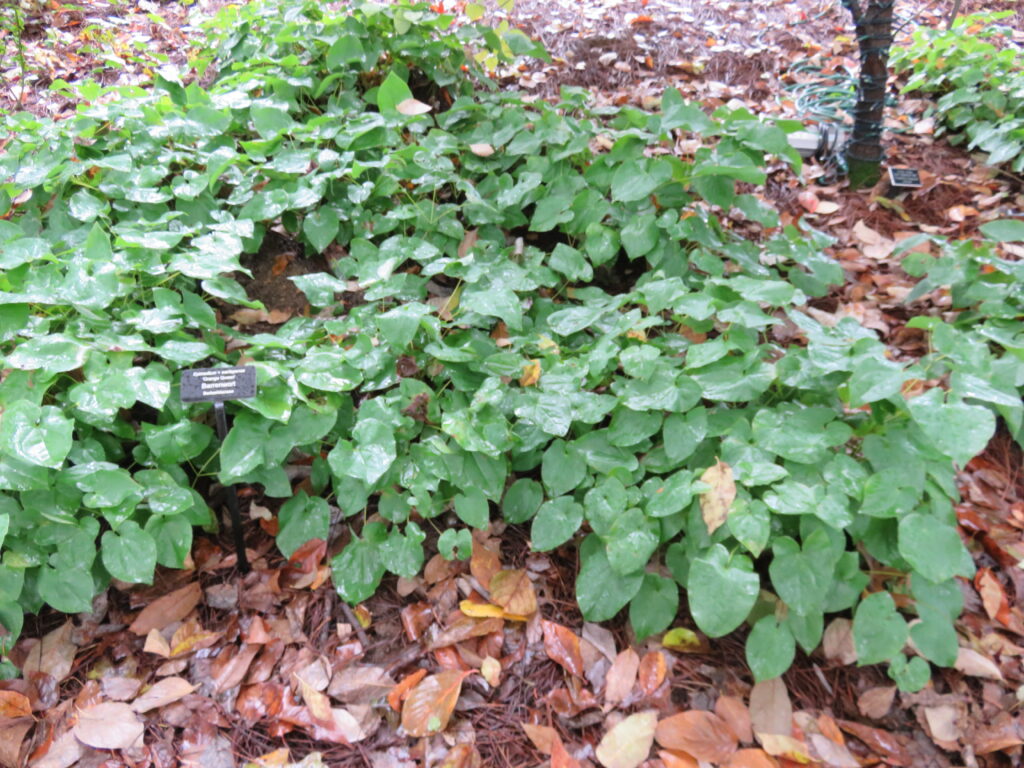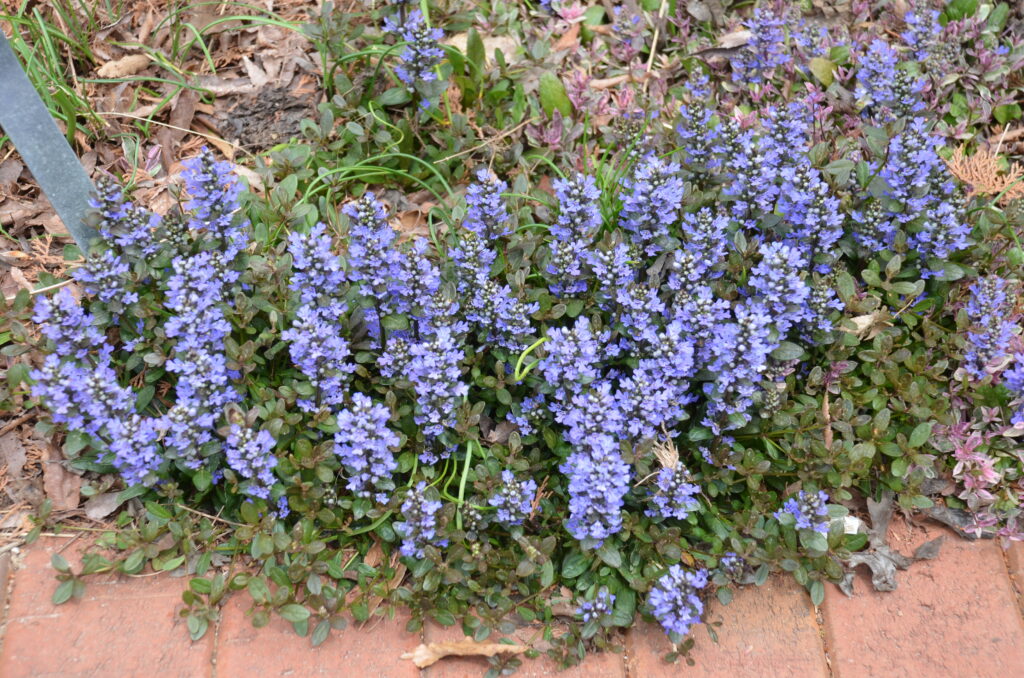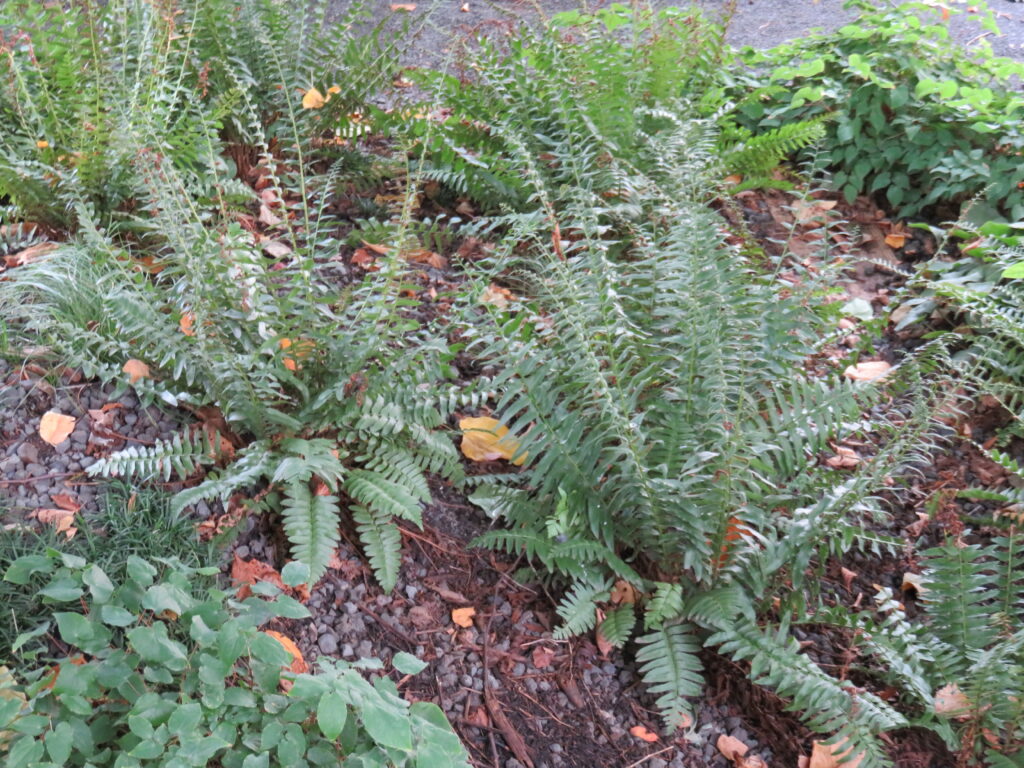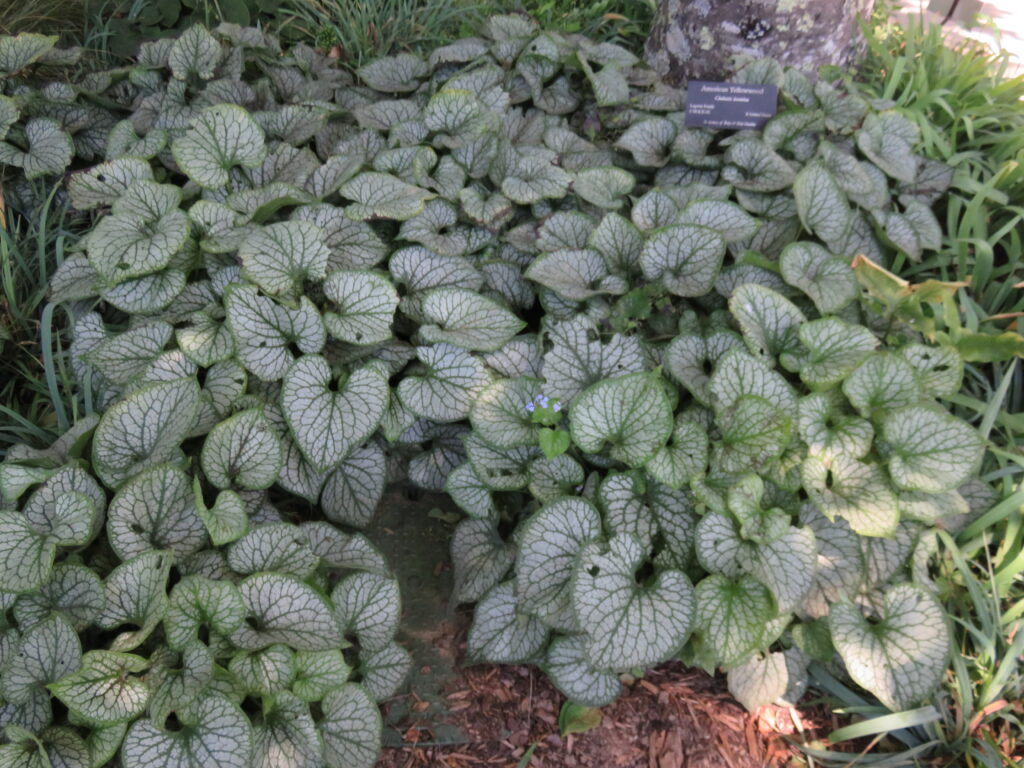
Consider planting a colorful array of low shrubs, perennials, annuals, ground covers and spring bulbs with hostas. Additions must prefer partial sun to shade and moderate moist soil. Choose varieties with brightly colored foliage, structure, size, texture and color for contrast. Avoid aggressive vegetative companions.
Hosta companions can include anemone, assorted ferns, astilbe, lenten roses (Helleborus), false Solomon seas (Polygonatum), toadlilies (Tricyrtis), bellworts (Uvularia), violets (Viola), and sedges (Carex). Most perennials and hostas all thrive in cool, shady, moist environs. (USDA hardiness zones 4-9).
Barronwort (Epimedium) – delicate four-petaled flowers emerge in early spring, followed by small heart- or lance-shaped leaves. Patterned or tinted foliage remains evergreen in milder climates. Mass as a ground cover in challenging deep shade sites as an understory plant alongside hostas.
Variegated Solomon seal (Polygonatum odoratum var. pluriflorum ‘Variegatum’) grows 1-3 feet tall with leaves painted with white edges. The white flowers have a sweet fragrance reminiscent of lilies. P. humile is a dwarf form, 6-9 inches tall and has relatively large flowers for its size.
Bugleweed (Ajuga reptans) – low groundcover that forms a beautiful vegetative carpet between your hostas. Its purple-blue blooms stand out above the foliage, Select cultivars ‘Chocolate Chip’, ‘Burgundy Glow’, ‘Black Scallop’, among others.

Cranesbill (Geranium spp.) – wide variety of flowering ground covers, mostl blooming in spring into early summer. Among the best: G. x cantabrigiense ‘Biokova’, Bigroot cranesbills (G. macrorrhizum), ‘Boom Chocolatta’ (G. x pratense)
Hakone Grass, Japanese forest grass (Hakonenchloa macra) – thrives in partial to near full shade with gold (‘All Gold’) and gold striped (‘Aureola’) foliage among other variegated forms; graceful arching habit and fine texture contrasts beautifully with the bold foliage and mounding shape of hostas.
Ferns (three popular shade ferns) Japanese painted fern (Athryium pictum ‘Nippon’), Maidenhair fern (Adiantum pedatum), Christmas fern (Polystichum acrostichoides) are excellent choices planted alongside shade loving hosta varieties.

Siberian bugloss or brunnera (Brunnera macrophylla) – a shade loving clump-growing perennial ground cover with spring blue forget-me-not like flowers; wonderful, variegated shade foliage that excels in zones 5-7 and hates summer heat and drought. ‘Jack Frost’, Jack of Diamonds’, many others. (zones 3-8)
Foamflower (Tiarella cordata) – an excellent ground cover in heavy shaded areas; its airy white flowers attract early pollinators. Top performing varieties are ‘Spring Symphony’ and ‘Brandywine’, among others.
Lungwort (Pulmonaria) – bell-shaped flowers occur in early to mid-spring in shades of blue, pink, red or white. The lance-shaped deciduous foliage can be green, silver, white or spotted
Pigsqueak (Bergenia crassifolia) – a lovely 2-3 feet ground cover in shady areas; slow-growing and moderately drought tolerant; evergreen in temperate parts of U.S.
Spotted Deadnettle (Lamium maculatum)- a hardy perennial ground cover with green, gold or variegated heart-shaped foliage and tubular flowers in colors of white, pink or lavender.
‘Sun King’ Golden aralia (Aralia cordata ‘Sun King’), aka Japanese spikenard – a rhizomatous, herbaceous perennial grows rapidly to 3-5 feet tall and wide and golden compound foliage. Small clusters of tiny white raceme flowers shoot up 2 feet tall in summer and lustrous purplish-black berries follow.
More favorites? Chinese astilbe (Astilbe chinensis), Bleeding Heart (Lamprocapnos (Dicentra) spectabilis), Coral Bells (Heuchera spp.), Daffodils (Narcissus spp.), Spanish bluebells (Hyacinthoides hispanica), and Assorted Ferns. Also plant pansies in the fall.


 Posted in
Posted in 
